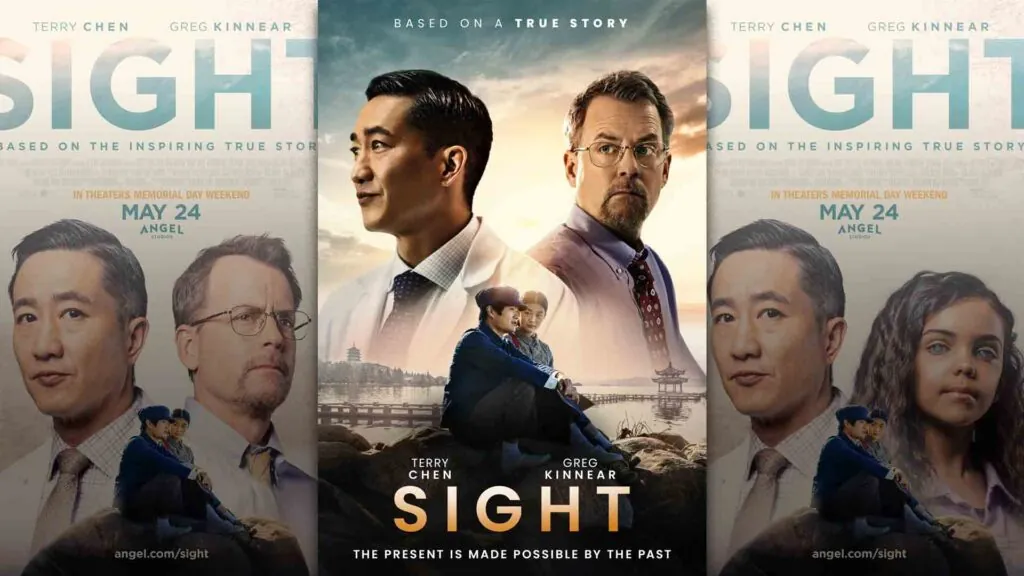Why is it important for Christians to understand stories? Obviously, God loves to tell them. Our world is saturated with His stories and the stories of those who emulate Him, stories that teach, inspire, entertain, and more.
However, Christians aren’t the only ones with access to this tool. The secular world pumps out hundreds of movies every year, and millions of books. Modern men and women sit with slack jaws, swallowing as much as can be shoved down their throats, without any active discrimination or discernment. But, just as stories can be edifying and beautiful, they can even more easily be toxic and destructive. The fallen world has all sorts of corrupt messages it would like to slip you, like a pill wrapped in cheese for a dog. With enough explosions and drama scenes, the lies often pass by unnoticed.
Worldview workout
Let the unbelievers be duped if they insist, but Christians should not be such an easy audience. We don’t need to exclusively consume explicitly Christian content, but we should not be caught unawares or slowly marinated in lies we not only fail to resist, but fail to even notice. We need to watch and read with open eyes and active, and even cynical, minds. We are not called by God to serve as the world’s trash cans taking in whatever’s pitched at us.
However, the ability to intelligently analyze stories isn’t a light switch you can just flip on. I can’t give you three simple steps that, if followed exactly, will instantly turn you into the perfect movie critic. This is something that takes practice. We do brain pushups. We change the way we look at stories; and then, over time, it becomes second nature.
Can’t spit out what you swallow whole
To start us off, it’s important to be a participant, not just a consumer.
Every story has a message, even if only in its worldview assumptions. This message isn’t always deep and philosophical. You will find children’s movies with the simple message of, “we don’t really care about quality and are just here to provide vapid stories in the hopes of getting your money.” But even that is a disrespectful statement about beauty and children.

To be a discriminating consumer means being engaged. When you open your novel, when your audiobook starts playing, when the TV turns on, don’t let your brain switch off.
Regardless of the depth of the message, there is always a message. A story is always insinuating judgements of one kind or another, and those judgements are true or false, wise or foolish, edifying or unedifying, engaging or a waste of your time. And when it comes to analyzing a book or movie, you can’t participate in a discussion that you don’t know is happening or that you can’t follow. Once you learn to pay active attention to what stories are actually doing, you can join the conversation. You can agree or disagree with another Christian about the value of a story, but the most important step has been made. You are no longer a passive consumer.
Sneaky one is what matters
A big note to remember is that stories often have both explicit and implicit messages. It will tell you what it’s saying, and then it will show you what it really thinks (and what it really wants you to think) as the story plays out. In a good story, the explicit “tell” and the implicit “show” will match. But in a poorly done, incoherent, or problematic story, they often do not. And in those cases, the implicit message should be treated as the real one. After all, monkey see, monkey do; not monkey hear overt instruction, monkey do.
Hunger Games
One such example of explicit-implicit messaging tension is The Hunger Games novels. There is a stated morality: it’s bad to kill. But our heroine Katniss’s situation is claimed as an exception. Katniss steps into her position in the deadly games sacrificially, taking her sister’s place. That initial ethical move is explicit messaging that any Christian could appreciate. However, Katniss then kills other children, some in self-defense, some not. And the readers/viewers are meant to treat her behavior as noble. However, the self-sacrifice is just tacked on to make the audience sympathetic to the murders Katniss commits.
What is demonstrated by the series is that Katniss actively chooses to kill when there are other options. Several other characters only hurt people in cases of self-defense; and in the second book, a group teams up against the real enemy and breaks out of the games. The implicit messaging of the books contradicts the explicit moral messaging, which keeps readers feeling guilt-free and loyal to Katniss as they vicariously enjoy the violence of a truly selfish character. And that loyalty to Katniss is so strong that people who disagree with my take tend to have very strong emotional reactions to my criticism.
Encanto and Barbie
Another example of implicit vs. explicit messaging is Pixar’s Encanto. The movie very clearly discusses heroine Mirabel’s problems and her need for growth; however, the action of the finale is purely affirmation that she was always great, and it shifts all blame to others. Turns out, all Mirabel was missing was confidence, and the movie ends by cosplaying self-affirmation as self-improvement.
In the Barbie movie, there are lines in the conclusion that affirm true equality, which are then immediately followed up by mocking the Kens (the stand-ins for all men) and banning them from holding any political power in Barbieland. Just like with people, when in doubt, believe the actions in a film, not the words.
God’s Not Dead
This goes for Christian movies, too. Faith films love to front-load positive explicit messaging, as if it can somehow redeem all the sentimentality, saccharine action, and clumsy filmmaking that follows. Bad news, kids. A movie that sets out to emphasize the importance of forgiveness on the most shallow level, without truly bringing God into it, might actually just convince viewers that Christianity is hollow and ugly. And yes, that should be treated as its real (even if unintended) message. We should care less about what you were aiming at, and more about what your bullet actually hit.
What a film does and shows you will always be a better representation of its impact on viewers than what it might tell you.
Even the author can miss it
A downstream effect of all this is that, funnily enough, authors can be wrong about their own works. Stories are slippery things. They can grow and move on their own.
A petty example is Harry Potter author J.K. Rowling’s understanding of her own character, Draco Malfoy. As she sees him, this pain in Potter’s side is just a flat and unredeemed bully. Rowling has admitted to being unnerved by Draco fans and has even claimed people only like him because of the actor, Tom Felton, who played Draco in the movies. However, is it possible some audiences saw something in the character that she, the author, missed? Of course it is. Her idea that an 11-year-old who was rude and used slurs can’t ever be sympathetic is silly. Draco Malfoy is a child with a horrible family situation, both his parents being elitist and racist murderers and Death Eaters. Draco also had no real friends and was unsupported by teachers. Later on, he is fully isolated, with the biggest, baddest villain in the story, Voldemort, holding Draco’s parents hostage and threatening to torture and kill them if the boy doesn’t completely destroy himself for Voldemort’s cause and commit murder. This child is so broken at that point, he’s crying in the bathroom when Harry walks in and goes, “ew, Draco” and almost kills him with a curse. Worse, the supposedly wisest and best adult figure in the story, Dumbledore, knows all about it, and allows it to continue for the greater good (and the good of Harry). Is it all that surprising that Draco’s character inspires pity and hope for redemption in so many fans? J.K. Rowling is surprised. I am not.
Consumer questions
There are many more such examples, but let’s get into some specific questions you can ask as you consume, and things to look out for in a story.
First up, the theme. What’s the theme statement? It normally happens in the first five minutes of a movie. It’s stated, and then contested in some ways, it is debated by the rest of the film, and it is the question the story will attempt to answer. This is a discussion you should be joining.
A pristine example is in the movie Gladiator. In the first scenes, the Roman soldier Quintus looks over the battlefield and the final barbarian horde as these Germanic tribes ready themselves to fight on to their inevitable doom. He then says, “Men should know when they’re conquered.” Should they? Really? Men should become submissive when up against overwhelming odds? Maximus answers, “Would you, Quintus? Would I?” As everyone should know who has seen it, the movie answers Quintus’ statement with a resounding “NO.” If you’re on the right side, you should not know when you’re conquered. Fight until the bitter end. Do not allow yourself to be steered by a fear of death. So, watch for overtly stated themes and questions early in a film – that’s what the film is going to be about.
After the action of the plot, the second major progression of a story is often the movement within the main character. Having identified the theme, character growth is the next thing to pay attention to. The key questions here are, where do they start and where do they end?
In stories with a strong character progression, there will be gradual change leading to a true pivotal moment, often at the beginning of the third act, sometimes right before the finale. Disney’s animated Mulan is about a young woman who disguises herself as a man so as to take her elderly father’s place in the conscripted army. She starts out with a good heart but is caught up in her own insecurities and foolishness. Through the movie, Mulan is getting smarter and better, all leading to a big moment just after she’s busted for being a woman. Then, she looks at her reflection, admits to her foolishness and self-absorption, and casts aside her reflection. The next time she stands up, she does so in true selflessness. Compare that to the more recent live-action version, and you’ll encounter an entirely different worldview. The older one actually has something healthy to offer. The new one… not so much.
What makes a book or movie good?
Of course, maybe the biggest question is whether a story is worth consuming at all. The three categories I use to determine the worth of a story are technical value, response value, and objective value. These are categories used around our own dinner table at home.
Objective value is easy. Does God like this story? If He asked you what you were watching or reading, would you be embarrassed to answer?
Response value is a little more subjective. What is the effect this has on you and on others? Watch your own emotional reactions. What does this make me feel? Why? Should I be feeling that? Maybe I felt moved because it was a well done and emotionally compelling story, or maybe I felt moved because it was sucking up to my temptations. Just because something felt good at first blush, doesn’t mean it is good. The road to hell is a primrose path and all that. Or, even if it’s a good story, is it feeding my mind some darkness that I don’t want in there? If you’re a parent, this means watching your kids’ reactions as well. The young will respond differently than you do.

The final category is technical value. How well executed is this movie? All the questions I’ve covered up until now are enough to be wise in consuming stories. But if you enjoy thinking about movies and books, and if you want to be involved in storytelling, you can dig into this category as well. Ask the questions, “Why does this movie feel fast?” or “Why do I not care about the main character?” “How was that shot so effective?” “Why do I like someone so unlikable?” For people looking to dive into this, I recommend the book, Save the Cat as a great resource on the story side of things.
Here’s a last tip if you’re trying to build these muscles in your kids. I always use these basic questions after every book and movie:
• Did you like it? Why or why not? (The words boring, stupid, or dumb are not allowed answers.)
• What was your favorite part or character? (Even if you disliked the movie.)
• What was your least favorite part or character? (Even if you liked it.)
Engage, wrestle, consider…
All in all, analyzing stories is pretty simple. I can distill it down to one simple instruction: ask questions. Don’t be passive and mindless. Question it. Poke at it. Wrestle with it. If you’re a Christian, pursuing holiness in your life, and you become intentional and intellectually active in your consumption, you’re most of the way there.
I hope you all enjoy stories as much as I do. Not as trash cans, but as active participants.












